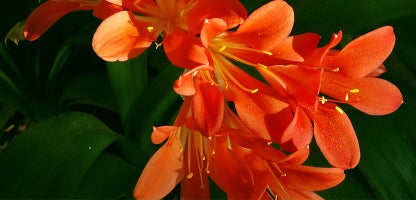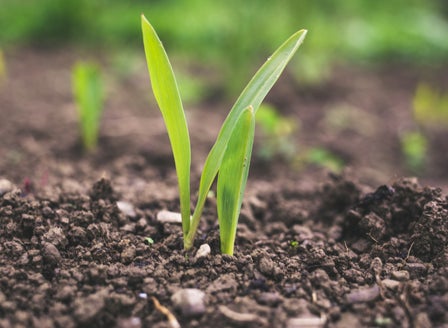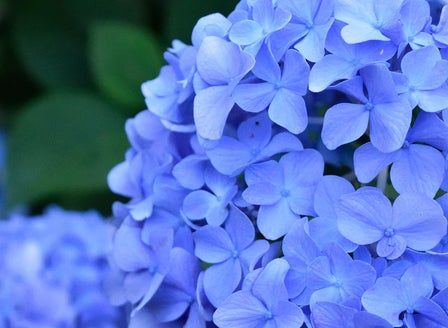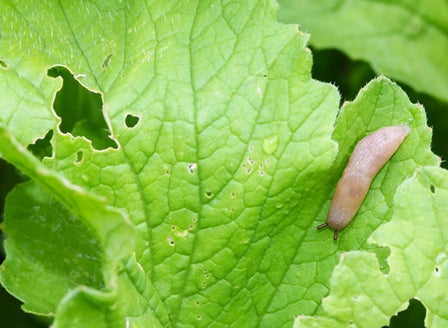A subtropical plant, clivia are an excellent plant for Auckland's climate. Clivia will brighten up those dark, dry, shady spots in your garden where other plants won't grow. Clivia flower in late winter- spring, flowers come in a range of colours from, red, orange, cream and yellow, which are produced on tall stems that sit above the dark green strappy leaves. They look amazing planted in large clumps under trees and are a great combination planted with Asplenium bulbiferum Hen and chicken ferns.
Planting Calendar
Clivia are best planted from Spring through to the end of Autumn, but are available throughout the year.
Prepare
Position
Clivia look best planted en masse, in a dry free draining position in either dappled or full shade, ideal planted under trees or on the south side of the house.
Soil
When planted into the ground Clivia likes a free draining soil that is rich in organic matter. To improve the organic content in your soil, break up the soil and add Kings Compost and Kings Sheep Pellets then mix together well. When growing in containers, plant into Kings Container mix. This mix contains added water storage crystals and Saturaid, two products that help maintain moisture in the soil.
Plant
Gently tap the plant out of its pot. Dig a hole twice the depth and width of the plants root ball. Mix Kings Compost into your existing soil at a 50/50 ratio, add Sheep Pellets and then mix together. Back fill the hole with this soil, so that when planted the top of the plant’s roots sit level with the surrounding ground. Firm the soil down gently and water in well with Aquaticus Organic Garden Booster. In heavier clay soils, where drainage is likely to be an issue, plant onto a raised mound and sprinkle Gypsum Clay Breaker into the bottom of the hole, this helps slowly condition the soil and help to break down the clay.
Care
Watering
Clivia do best in a dry, shaded, underplanted environment and do not like wet feet. Clivia will benefit from regular watering in both spring and summer, but reduce watering in the colder months.
Feeding
Liquid feed every month with Aquaticus Garden Booster, from Spring through to the end of Autumn, this encourages root growth and increases the microbial activity in the soil. Monthly applications of Kings Sheep Pellets will help with soil conditioning and plant health.
Protecting
Clivia plants are a favourite meal for slugs and snails. Protect with either Baysol or if you have pets use Tui Quash.
Spraying
Clivia are tough and do not usually need spraying.
Pruning
Prune to remove spent flower stalks and any damaged leaves.
General Care
When using sprays, chemicals or fertilisers always read the label and follow the instructions. Apply sprays in the evening to avoid harming beneficial insects.
Beginner Tip
When your plants have formed a large clump, usually around 1-2 years old, you can divide them giving yourself more plants. If dividing from a plant, wait until the plant has finished blooming in the spring before dividing it at the roots. Divided plants usually flower in two years while seed-grown plants can take 4 to 6 years.
Expert Tip
If planted in too much sun you will find that the leaves will turn yellow and burn.
Tip
The Niwashi Shark is a great tool for dividing large clumps of Clivia. The saw like blade quickly works through clumps of fibrous roots.
Top Varieties

Clivia Miniata
Clivia miniata is the best-known species to be grown in gardens, offering clusters of lovely orange/red coloured open flowers. Some interesting forms of clivia miniata include yellow, cream and deep red flowers.
Frequently Asked Questions
When will my Clivias start to flower
Clivia usually start to produce flowers once they have grown 7 sets of leaves.
Why are my flowers not developing properly?
Slugs and snails love to feast on the developing and new flower shoots, place slug and snail bait around the new flower stems to prevent this. Tui Quash is a safe slug and snail bait to use if you have a dog. Reapply the bait after heavy rain.
How often should I water my Clivias?
Clivia do best in a dry, shaded, underplanted environment and do not like wet feet. Clivia will benefit from regular watering in both spring and summer, but reduce watering in the colder months.
Do Clivias need fertilising?
Liquid feed every month with Aquaticus Garden Booster, from Spring through to the end of Autumn, this encourages root growth and increases the microbial activity in the soil. Monthly applications of Kings Sheep Pellets will help with soil conditioning and plant health.
How do I propagate Clivias?
Clivias are best propagated by division. After flowering, gently remove the plant from its pot or garden bed and separate the offsets from the parent plant. Replant the offsets in well-draining soil and keep them in a shaded area.


